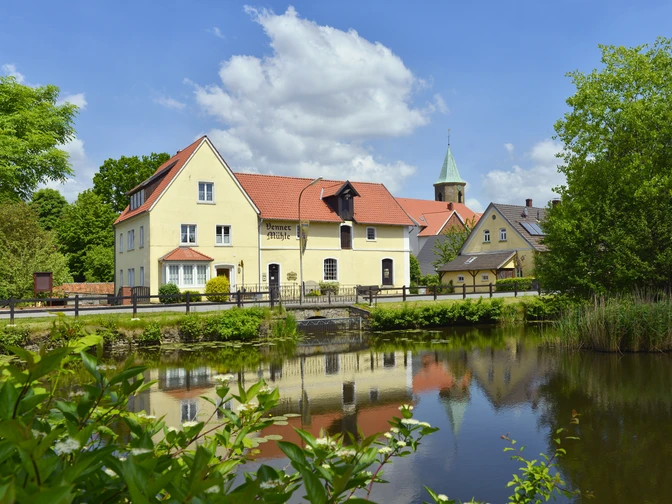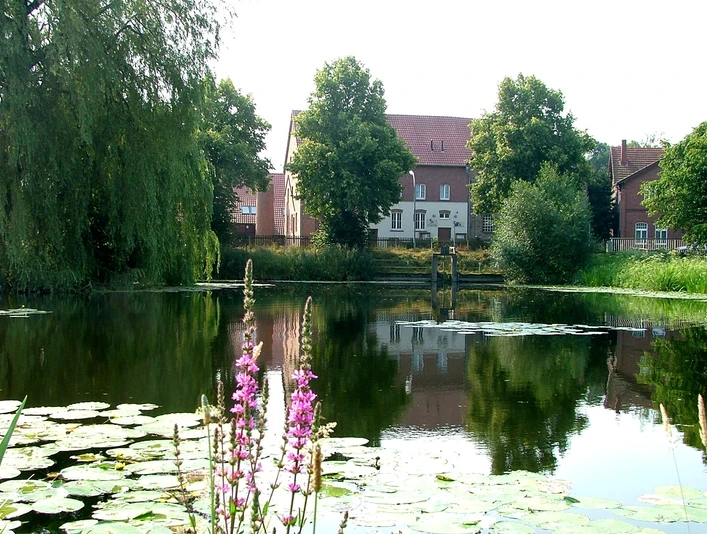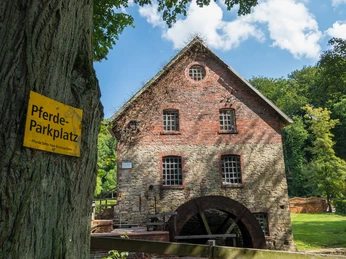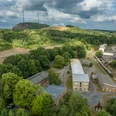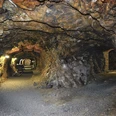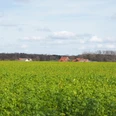And is wrong, at least for the millers of the Osnabrück region. Because they are here to stay. And they maintain their technical monuments with great dedication and attention to detail - so that you can discover eleven historic mills on your hike along the 97-kilometre-long mill trail in the Wiehengebirge. Almost all of them are fully functional and most of them can be visited. And without exception, they are located in a particularly attractive landscape between Osnabrück and the Wiehengebirge mountains.
Up-to-date information on the mill trail!
The mill trail in the Wiehengebirge mountains is currently being completely redesigned and redesigned. One of the reasons for this is the dissolution of the previous hiking association. All markings and signposts are currently being dismantled. In the medium term, the municipality of Wallenhorst, in cooperation with the other neighboring municipalities and the TERRA.vita Nature Park, will redesign the content of the mill trail and mark it accordingly.
We ask for your attention and thank you for your understanding.
Historical technology in action
When children draw a mill, it almost always looks exactly like the Lechtingen windmill: a proud gallery Dutchman with four mighty sails. The fact that these still turn regularly is thanks to an association of mill enthusiasts. They spent five years restoring the mill, which was shut down in 1970. Today, it is the pride of the municipality of Wallenhorst and a popular excursion destination, as the historic technology can be viewed in full operation. If you buy a souvenir in the mill store, you are supporting the association. Almost all the other mills along the route are powered by water. Nothing could be more obvious, as the Teutoburg Forest and Wiehengebirge mountains are home to countless streams that characterize the landscape along the trail. The inner workings of a watermill can be experienced particularly well in Ostercappeln-Venne.
Islands in the mill pond
Here, too, an association restored the historic facility, leaving in technical innovations that have been added over time. For example, an 80-year-old diesel engine that was started up when water was scarce. In the mill pond directly opposite, there are two islands on which the local history and hiking association runs a small open-air museum with a bakehouse, smithy and café - a wonderful place to rest, especially on Sundays when fresh cake is served. For good reasons, not all mills can be visited from the inside. Sommer Mill, for example, is privately owned and still in operation. The Schleptrup mill stream has powered a sawmill here for centuries.
Castles, palaces and a weather hen
The watermill in the Nettetal valley has been producing flour for more than 800 years. Electricity is also generated here using the power of water. This is not a completely new idea: the Tüchter mill was already supplying 19 households with electricity at the beginning of the 20th century. In addition to the nine water mills and two windmills, you will discover numerous other monuments along the way. For example, the ruins of the 1,200-year-old Wittekindsburg castle, the watermill in Nettetal Wassermühle in Ostercappeln/Venne, Alt Barenaue moated castle and Neu Barenaue castle as well as the Alte Alexanderkirche church in Wallenhorst. It is considered to be the oldest church far and wide. Its tower is not crowned by a rooster, but by a hen, because she was supposed to "hatch" other churches. As you will see along the way, this has worked.
For more information on the Mühlenweg and attractive package deals, visit www.muehlenweg-am-wiehengebirge.de
Our suggested stages:
Stage 1: Wallenhorst - Nettetal (Osnabrück), approx. 12 km
Stage 2: Osnabrück (Attersee) - Bramsche (Schleptrup), approx. 21 km
Stage 3: Bramsche (Kalkriese) - Ostercappeln-Venne, approx. 11 km
Up-to-date information on the mill trail!
The mill trail in the Wiehengebirge mountains is currently being completely redesigned and redesigned. One of the reasons for this is the dissolution of the previous hiking association. All markings and signposts are currently being dismantled. In the medium term, the municipality of Wallenhorst, in cooperation with the other neighboring municipalities and the TERRA.vita Nature Park, will redesign the content of the mill trail and mark it accordingly.
We ask for your attention and thank you for your understanding.
Historical technology in action
When children draw a mill, it almost always looks exactly like the Lechtingen windmill: a proud gallery Dutchman with four mighty sails. The fact that these still turn regularly is thanks to an association of mill enthusiasts. They spent five years restoring the mill, which was shut down in 1970. Today, it is the pride of the municipality of Wallenhorst and a popular excursion destination, as the historic technology can be viewed in full operation. If you buy a souvenir in the mill store, you are supporting the association. Almost all the other mills along the route are powered by water. Nothing could be more obvious, as the Teutoburg Forest and Wiehengebirge mountains are home to countless streams that characterize the landscape along the trail. The inner workings of a watermill can be experienced particularly well in Ostercappeln-Venne.
Islands in the mill pond
Here, too, an association restored the historic facility, leaving in technical innovations that have been added over time. For example, an 80-year-old diesel engine that was started up when water was scarce. In the mill pond directly opposite, there are two islands on which the local history and hiking association runs a small open-air museum with a bakehouse, smithy and café - a wonderful place to rest, especially on Sundays when fresh cake is served. For good reasons, not all mills can be visited from the inside. Sommer Mill, for example, is privately owned and still in operation. The Schleptrup mill stream has powered a sawmill here for centuries.
Castles, palaces and a weather hen
The watermill in the Nettetal valley has been producing flour for more than 800 years. Electricity is also generated here using the power of water. This is not a completely new idea: the Tüchter mill was already supplying 19 households with electricity at the beginning of the 20th century. In addition to the nine water mills and two windmills, you will discover numerous other monuments along the way. For example, the ruins of the 1,200-year-old Wittekindsburg castle, the watermill in Nettetal Wassermühle in Ostercappeln/Venne, Alt Barenaue moated castle and Neu Barenaue castle as well as the Alte Alexanderkirche church in Wallenhorst. It is considered to be the oldest church far and wide. Its tower is not crowned by a rooster, but by a hen, because she was supposed to "hatch" other churches. As you will see along the way, this has worked.
For more information on the Mühlenweg and attractive package deals, visit www.muehlenweg-am-wiehengebirge.de
Our suggested stages:
Stage 1: Wallenhorst - Nettetal (Osnabrück), approx. 12 km
Stage 2: Osnabrück (Attersee) - Bramsche (Schleptrup), approx. 21 km
Stage 3: Bramsche (Kalkriese) - Ostercappeln-Venne, approx. 11 km
Good to know
Best to visit
suitable
Depends on weather
Additional information
Weitere Infos zum Mühlenweg auf www.muehlenweg-am-wiehengebirge.de
More information
Unsere Etappenvorschläge:
Etappe 1: Wallenhorst – Nettetal (Osnabrück), ca. 12 km
Etappe 2: Osnabrück (Attersee) – Bramsche (Schleptrup), ca. 21 km
Etappe 3: Bramsche (Kalkriese) – Ostercappeln-Venne, ca. 11 km
Etappe 1: Wallenhorst – Nettetal (Osnabrück), ca. 12 km
Etappe 2: Osnabrück (Attersee) – Bramsche (Schleptrup), ca. 21 km
Etappe 3: Bramsche (Kalkriese) – Ostercappeln-Venne, ca. 11 km
Contact person
License (master data)
Tourismusgesellschaft Osnabrücker Land mbH
Social Media
Nearby
